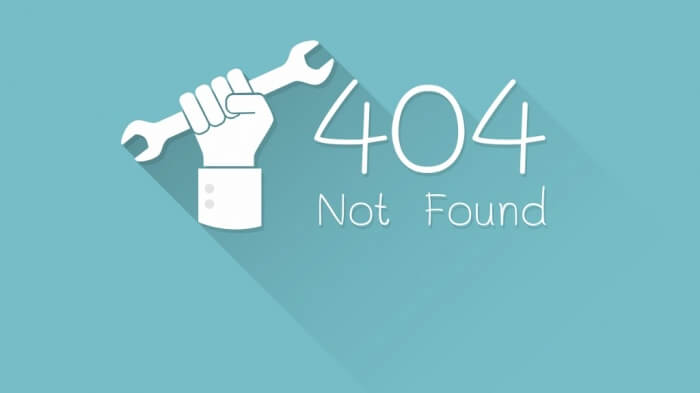At the start-up phase, a few small glitches can send your business down the wrong path. Here's how to avoid the biggest traps.
9 Ways Ecommerce Merchants Fail In The First Year
At the start-up phase, a few small glitches can send your business down the wrong path. Here's how to avoid the biggest traps.

Year one of your new ecommerce startup is the toughest. Failure isn’t an option, but unfortunately – mistakes are often made. Here are nine common mistakes that new ecommerce merchants are prone to – read on to learn how you can avoid these pitfalls and start your store the right way.
Setting out product categories back to front
Don’t approach product categorisation like a traditional shopkeeper.
Setting out a good ecommerce store structure is about deep keyword research led by your users – not about creating a nice looking shop.
- Unless you are paying for Google Adwords, you will struggle to get good keyword data for free. There are a loads great SEO tools out there, but it’s probably safer to go with a big player like SEMrush and Moz.
- Use keyword analysis to help you create product category landing pages that are more likely to rank. Use your main keywords in your URLs and page titles if you can.
- Don’t overload the user – try to keep product selection clean.
Spending money on the wrong things
Budgeting is a big buzzword for small businesses – ecommerce is no different.
- Do you really need expensive professional photography? Can you shoot some product photos yourself and add more personality?
- Don’t fall into the trap of signing up for all the possible subscription services under the sun.
Yes, they might have a compelling sales pitch – but do you really need them? Do an audit of your monthly subscription outgoings and cull anything you don’t use.
- So many people start off with too many upfront costs that cripple cash flow in the first two months, taking the rest of the year to recover (if sales pick up).
An expensive custom web build, fancy office space, a big warehouse – do you really need them? You can create an online store for a small monthly fee, make do with a co-working space and hire space in a shared warehouse. Start small to go big.
Not fixing ‘little’ technical issues
Is your Search Console screaming at you about 404s? Did you forget to do your XML sitemap? Does your search box throw up a lot of errors? Is your page load time rubbish?
- For a site to be ranked by search engines and liked by users it has to be technically sound. There is no way to get around this.
- You are running a highly complex technical environment and you’re relying on it for your income. It has to work.
- Get a technical audit from an SEO or someone who knows what they are talking about. One of those spammy emails you get in your inbox is not a trusted source for SEO information.
- Page speed is huge for ecommerce – here is an infographic from Kissmetrics that shows how it impacts your bottom line.
Not focusing on sales & networking
It can be tempting to think that throwing up a website on a URL is enough to generate sales and business, but the truth is that ecommerce is hard graft. You are going to need the tenets of more traditional business: sales and networking.
- You’ll have to learn to pitch your business and products to customers, bloggers and potential clients. Get your story straight & learn how to effectively pitch your business (some top tips on winning business here).
- Your job is to sell effectively. Have a sales strategy in place and don’t get lazy.
- Allocate dedicated business development time during the week and stick to it.
Not reacting to data fast enough
When data comes in you have to analyse it and react – not just file it away.
When you’re get fresh data from your store on daily basis there really is no excuse for ignoring what is happening down on the ground.
- Get good at understanding data and how it impacts your bottom line. Be familiar with analytics and the metrics you’re looking at.
- If you struggle with data, it might be an idea to invest in a data analyst or data software to help you better manage store data insights.
Settling for a sloppy brand
Good branding will help you grow faster. Don’t settle for ‘close enough’.
- Create an exciting culture and energy around your brand – make it seem as 3D and real as possible. Be transparent and open – it works better than bland ‘robospeak’.
- Especially in competitive niches like fashion and lifestyle, people will be buying from the brand. Get all your touchpoints sorted.
- Even in B2B, having a strong brand is super important. Big businesses often judge themselves by who they are associated with.
Customer retention issues
Many merchants don’t wake up to the importance of nurturing relationships with their customers fast enough, focusing blindly on leads.
- To succeed as a merchant, you have to nurture relationships to get more lifetime value out of your customers. Build relationships in your store, use personalised ads, connect with your emails, and engage through social media.
- Have a robust email marketing strategy with personalised offers and incentives in place to encourage repeat purchases.
- Invest in conversion rate optimisation to ensure that you are properly dealing with all the leads that come to your store. Use tactics like cross-selling, up-selling, and cart abandonment emails to up the average purchase value
Having a messy content strategy
Good content strategy will save you money and time. Creating the wrong type of content and working without processes is damaging and ineffective.
- To help hit key sales KPIs and seasonal goals, map out a coherent content strategy.
- Use an editorial calendar to help you manage content creation. Use one to cover all your content channels.
- Invest in content tools and expertise to help you speed up the writing process.
Giving up too soon
There seems to be a (worrying) school of thought out there that running an ecommerce business is really easy and that anyone can do it. And yes, with the help of platforms and dropshipping – ecommerce has been opened up to more people. But there are no substitutes for putting in the hard graft and running your business.
- You can’t turn over your business into the hands of automated bots and processes in the first year. You have to walk the walk and put in the hours to kick things off.
- Passive income online isn’t built in a day. Don’t be enticed by the siren calls of being able to retire at 45, and not expect to do any hard work.
If you do find yourself making some of these mistakes – don’t be too hard on yourself. It’s only human to make errors from time to time. These preventative measures should help you set up a more sustainable and long term business. Let us know what you think your biggest challenge is right now.
Thanks for signing up to Minutehack alerts.
Brilliant editorials heading your way soon.
Okay, Thanks!




